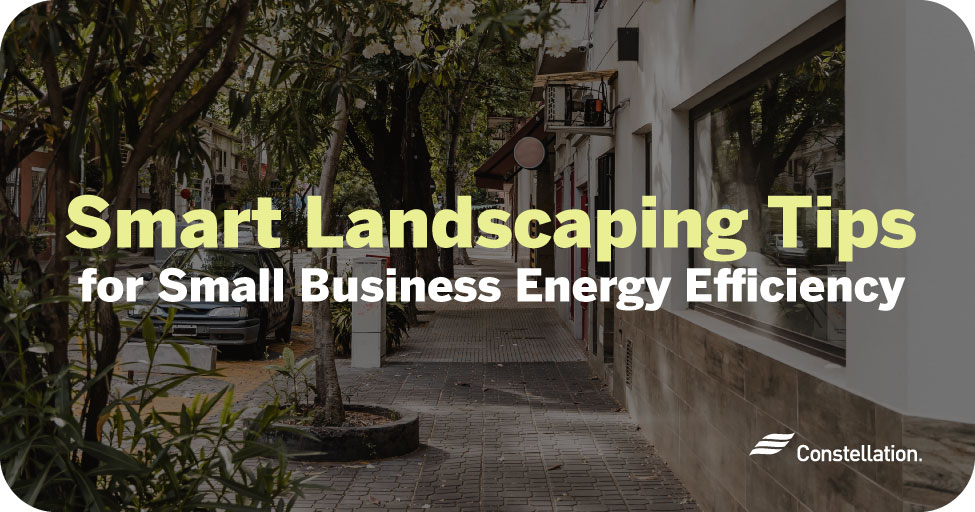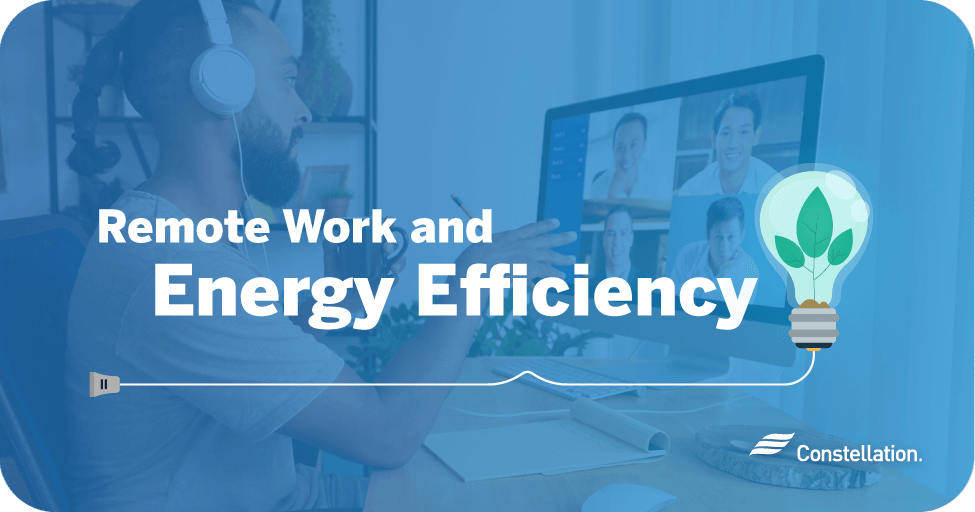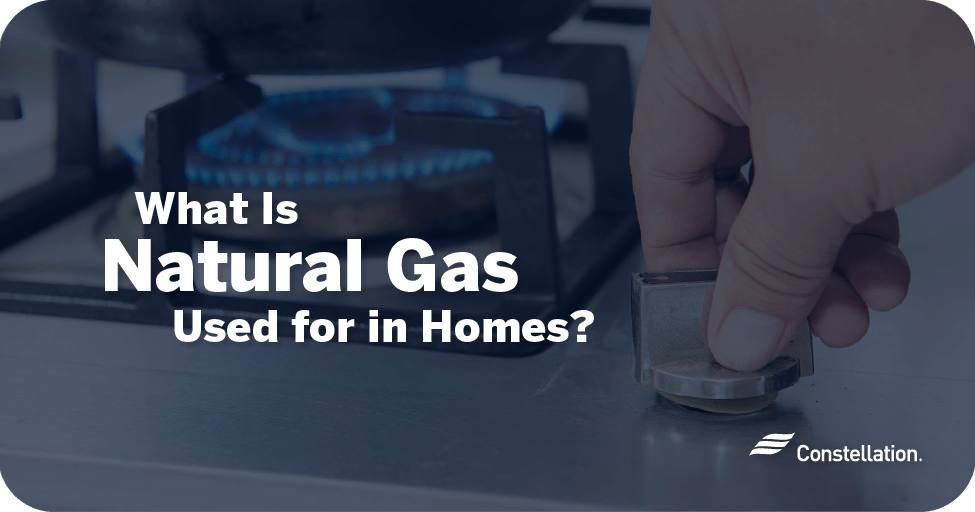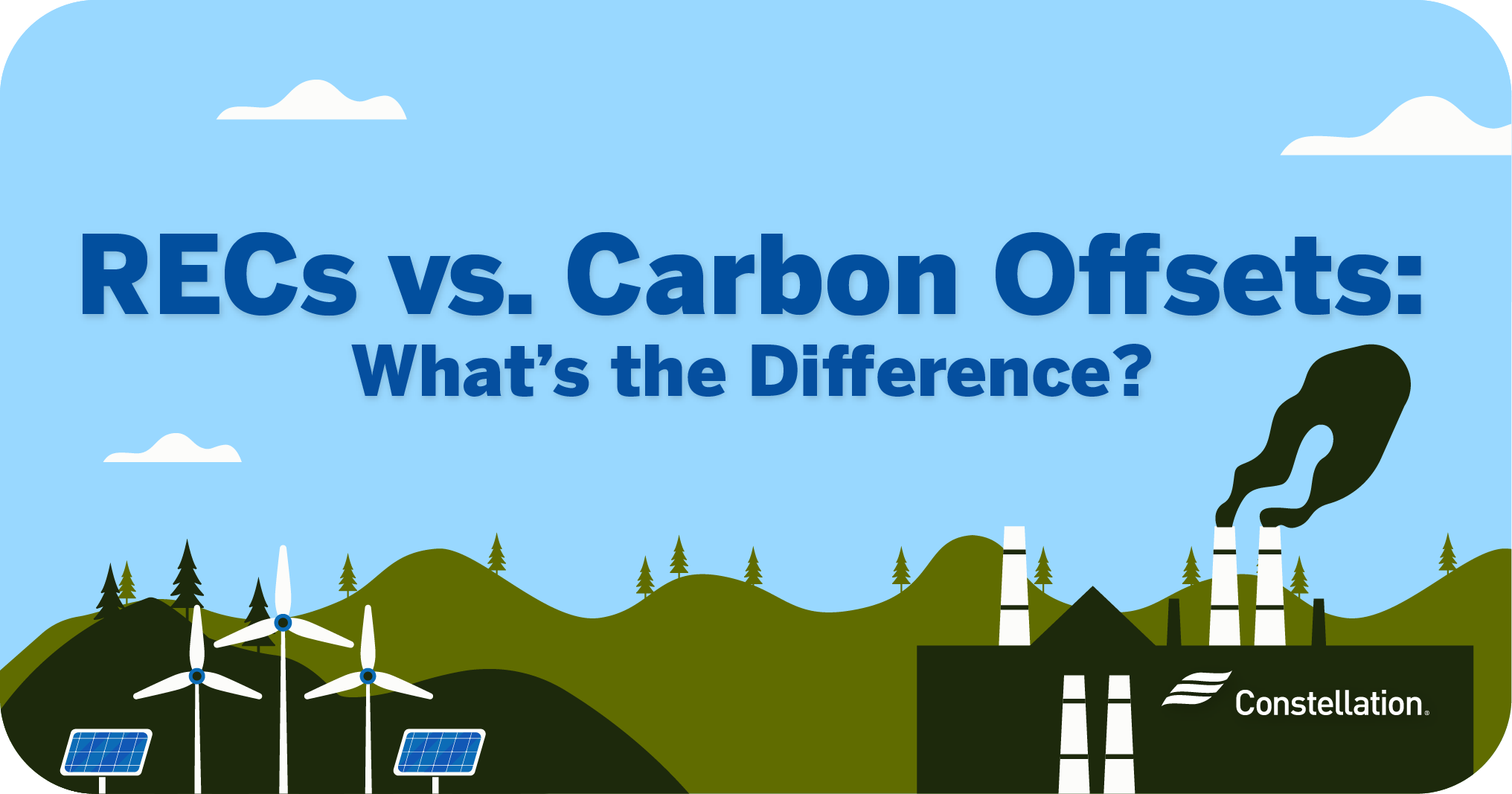
- Category:
Green Energy - Published:
February 10, 2016 - Updated:
March 25, 2024
RECs vs. Carbon Offsets: What’s the Difference?
You can play an important part in caring for the environment with every energy choice you make. Simple changes to your habits like switching to energy efficient lights and appliances can help reduce the energy you use, but if you want to do more there are other ways to help. Renewable energy certificates (RECs) and carbon offsets are two additional options to consider.
To get started, you will want to understand the differences between RECs vs. carbon offsets and how they work to contribute to a cleaner environment. Then consider how these options might best work for your situation.
Jump to section:
- What are RECs?
- What are carbon offsets?
- RECs vs. carbon offsets
- Choosing between RECs and carbon offsets
- Minimizing your carbon footprint
What are RECs?
Renewable energy certificates, or RECs, support building out more renewable energy generation capacity according to the Environmental Protection Agency (EPA). A REC is a legal accounting and power tracking instrument for distinguishing power generated by renewable technology from power generated using fossil fuels.
When a wind or solar farm feeds energy into the grid, the power system operator measures the megawatt-hours provided. A tracking system then issues a REC to certify the source and amount of clean energy provided to the grid. The RECS can then be sold to customers who prefer clean, renewable energy.
When you buy a REC, you’re helping to reward clean energy producers and encouraging greater investments in renewable power generation. Plus, by using clean energy, you’re reducing your carbon footprint. It’s a win-win.
What are carbon offsets?
Another tool for reducing your carbon footprint and supporting a cleaner environment is carbon offsets. Like a REC, a carbon offset is a legal accounting and tracking instrument.
However, there is a difference between RECs and carbon offsets. A carbon offset represents one ton of carbon dioxide that’s been taken out of the atmosphere. Here is more on understanding carbon emissions. A carbon offset is created through various activities, such as:
- Capturing landfill gas or methane released during mining for use in generating electricity
- Reclaiming land and planting trees that absorb carbon dioxide
- Using biogas digesters to convert manure on farms into usable methane
- Adopting regenerative agriculture practices like no-till planting and limited use of pesticides and synthetic fertilizers
A variety of organizations, such as Verra Verified Carbon Standard (VCS), validate carbon reduction programs and issue carbon credits for carbon removed from the atmosphere. They are an instrument for offsetting the pollution you create.
If you take a jet flight, use oil or gas to heat your home, or buy electricity generated by coal, you can buy carbon credits to support activities that remove that pollution from the atmosphere. How big is your carbon footprint? Figure out the amount of carbon offsets to buy using this carbon footprint calculator from the EPA.
6 differences between RECs and carbon offsets
Understanding carbon offsets vs. renewable energy certificates is the first step in deciding which choice or combination of choices works best for your situation. Here are the key carbon offsets vs. RECs differences:
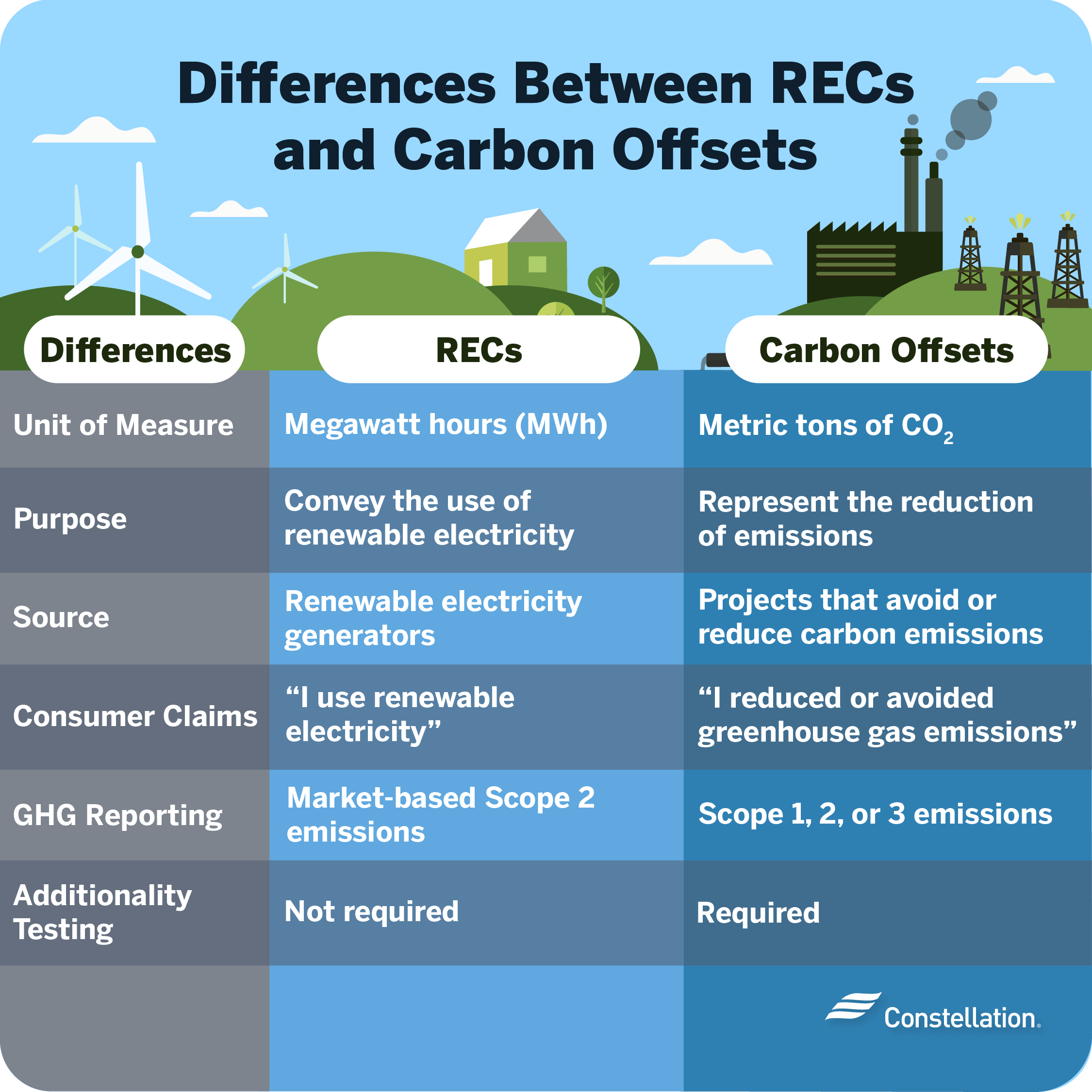
1. Unit of measurement
RECs vs. carbon offsets are measured differently. RECs are measured in megawatt hours of clean energy produced. Carbon offsets are measured in metric tons of carbon dioxide removed from the atmosphere.
2. Purpose
Another difference between RECs and carbon offsets is why they were created. The purpose of a REC is to give energy users a way to choose to buy clean energy and to reward clean energy producers financially. The reason carbon offsets were created was to provide a financial reward for investments that remove carbon from the atmosphere.
3. Source
Another RECs vs. carbon offsets difference is where they come from. RECs are created when renewable energy from solar, wind, geothermal, biomass, and hydropower is sent to the grid. Offsets are created when a project removes greenhouse gas emissions from the air.
4. Consumer claims
When talking about making a contribution to a cleaner environment, it helps to be clear in what you say. Using RECs vs. carbon offsets interchangeably contributes to the confusion. A REC is a way to buy clean energy. An offset does, in fact, make up for the emissions you produce through activities that remove those emissions from the air.
5. Greenhouse gas reporting
When you write or read corporate reporting on the use of carbon offsets vs. renewable energy certificates, each should be separately listed. When you see mention of “net” emissions, you are looking at the greenhouse gasses a company produces minus the carbon offsets they buy. When you see “scope 2” emissions, you see the greenhouse gasses a company generates from using power from fossil fuels, not clean energy represented by RECs.
6. Additionality testing
Additionality is a fancy way of saying that carbon offsets need to be generated by projects that go over and above the normal operational activities of companies. Organizations that certify offsets want to make sure that the emissions claimed really do represent a genuine metric ton of reduced atmospheric greenhouse gasses. RECs, on the other hand, are metered at the source and don’t need to prove additionality.
Choosing between RECs and carbon offsets
Individual energy customers and small businesses can choose between RECS vs. carbon offsets–or choose both. They are not only for large corporations. Both are valuable if you are looking for how to reduce your carbon footprint.
If you want to commit to clean power and support renewable home energy options, RECs are a great choice.
If you want to be proactive and reduce the carbon dioxide and other greenhouse gasses in the atmosphere, buying carbon offsets for the pollution you create can make a difference.
The importance of minimizing your carbon footprint
If you care about the environment, minimizing your carbon footprint will help. Constellation is here to help you do more than improve your energy efficiency. We make purchasing RECs by businesses easy and straightforward. Carbon offsets from Constellation put this option within reach of businesses.
Whether you want to use carbon offsets vs RECs, Constellation has great options for you and the environment.
